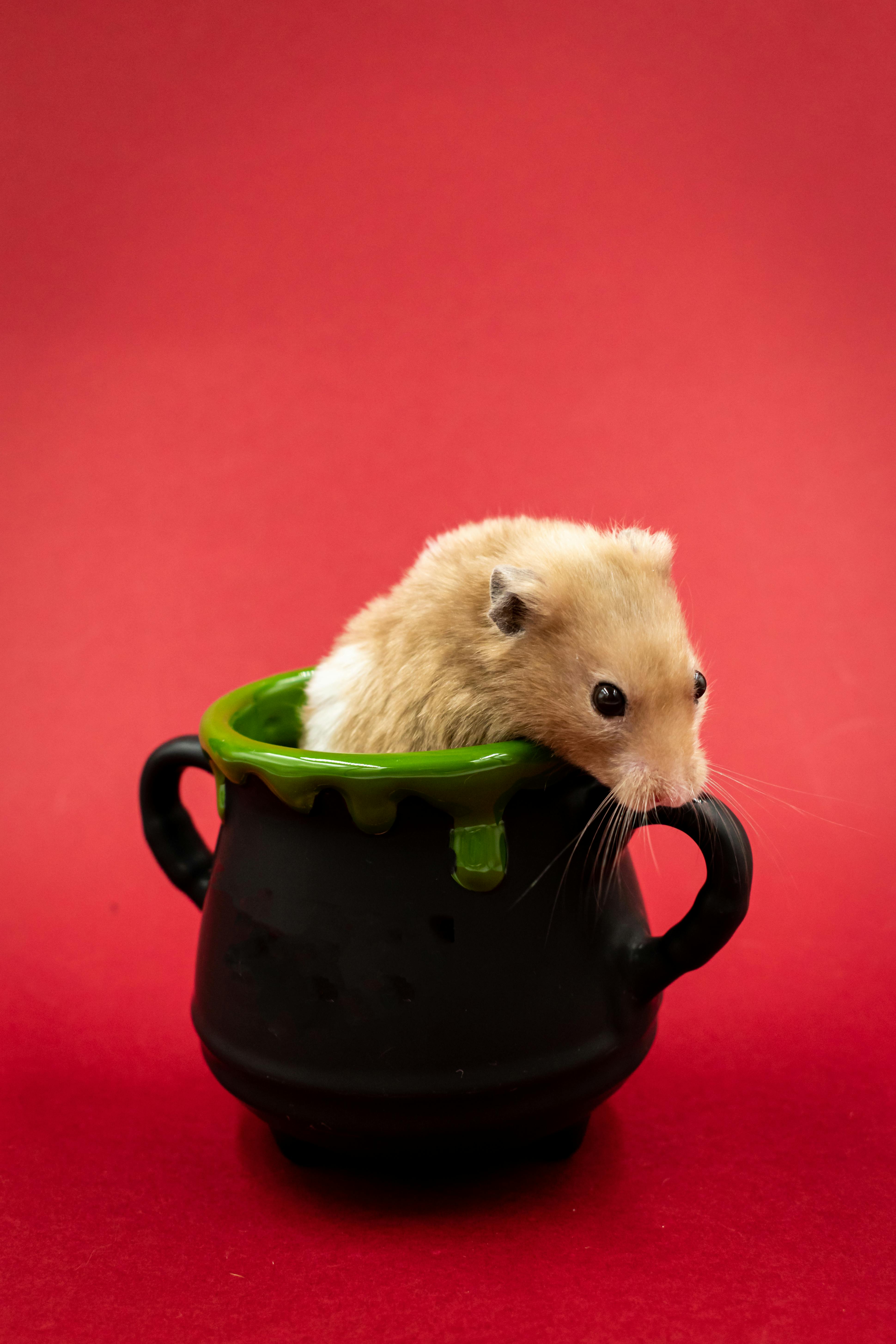
Apply Now


Effective Solutions for Aquatics and Exotics in 2025
Aquatic pets and exotic species are becoming increasingly prominent in household settings, as enthusiasts seek both beauty and companionship in their living environments. With a growing trend toward sustainable aquariums and responsible pet ownership, it's crucial to explore effective solutions in fish care, aquarium setups, and maintaining aquatic ecosystems. This article will delve into the latest practices and innovations for freshwater and saltwater aquariums, alongside the care of exotic pets, ensuring you provide the best environments for these unique creatures. We'll also cover fish tank maintenance, aquatic plants, and the importance of water quality testing, fostering a thriving aquatic habitat. As you navigate through this comprehensive guide, you will discover practical tips, expert recommendations, and emerging trends in aquatic life and exotic pet care for 2025. By the end, you will have a solid understanding of how to create sustainable, eco-friendly aquariums, care for a variety of fish species, and maintain the health of aquatic environments.Essential Guide to Aquarium Setup for Freshwater and Saltwater
Creating an effective aquarium setup is vital for maintaining a healthy aquatic environment. Whether you opt for freshwater aquariums or marine aquariums, there are essential elements to consider for optimal fish care. First and foremost, the type of aquarium you choose will dictate the specific needs of your aquatic organisms. In freshwater aquariums, it's essential to select compatible fish species and provide adequate decoration using natural materials like rocks and plants. This not only enhances the aesthetic appeal but also mimics their natural habitats, fostering a healthier ecosystem. An aquarium filter is crucial for maintaining water quality, so ensuring you have the right filtration system is key. For those venturing into saltwater aquariums, the complexity increases due to the delicate balance of salinity and water chemistry. Introducing live rock can aid in establishing beneficial bacteria for biofiltration, critical for managing ammonia levels. Moreover, heating your aquarium using an appropriate aquarium heater is necessary to maintain the tropical conditions that many marine species thrive in. It's important to remember that no matter the type of aquarium setup, regular maintenance and monitoring of water parameters are crucial to sustain aquatic life.The Best Equipment for Successful Fishkeeping
Investing in quality equipment is a foundational step in setting up an aquarium. Essential tools include an efficient aquarium filter, a reliable heater, and appropriate lighting systems tailored to your chosen fish and plants. Modern LED lights not only promote plant growth but can also help create stunning visual displays within your tank. The aquascaping process is also a vital aspect of aquarium design. It involves carefully arranging rocks, plants, and substrates to create a visually appealing and functional ecosystem. Utilize live plants to enhance oxygen production and provide hiding spots, which will contribute to a comfortable environment for your fish. Furthermore, incorporating fish tank accessories such as algae-eating fish can help maintain cleanliness, reducing the workload during routine maintenance. With these tools and strategies in place, your aquarium will be poised to flourish, creating a beautiful habitat for your fish.Understanding Water Quality Testing and Care
Monitoring water quality is one of the most critical aspects of fish tank maintenance. Regular testing ensures the water parameters are optimal for the species you house, as poor water quality can quickly lead to fish diseases and overall ecosystem failure. Use reliable water quality testing kits to regularly check for ammonia, nitrate, and nitrite levels. Additionally, understanding the nitrogen cycle is crucial for maintaining a balanced aquarium. Establishing beneficial bacteria can help convert harmful waste products into less toxic forms, so consider adding biofiltration systems that stimulate this process. Implementing water conditioners is another proactive measure. These solutions can help neutralize harmful substances, making your tank a safer environment for all aquatic life. Regular water changes will also promote overall health, contributing to the longevity and vibrancy of your aquarium.Innovations in Fish Food and Nutrition
As aquarists become more knowledgeable about fish nutrition, the variety of fish food available has expanded significantly. Flake, pellet, frozen, and live foods offer diverse dietary options tailored to different species. Each type of fish species may require unique nutrients, which emphasizes the importance of understanding their dietary needs. Developing a balanced feeding schedule is essential to prevent overfeeding, which can lead to poor water quality and health complications for your fish. Consider incorporating nutritional supplements and specialized formulations designed to promote vibrant colors and overall health. A well-implemented feeding strategy – one that considers both the lifecycle and behavior of your fish – will ultimately support their growth and vitality.Community Fish and Tank Mates: Finding Compatibility
Choosing community fish and understanding their compatibility with other species is crucial for creating a harmonious aquatic environment. Research the behavior and social structures of various fish species before combining them in your tank. Some fish thrive in groups, while others may display territorial tendencies. Prioritize establishing a diverse tank that fosters engagement and reduces stress among fish. Utilize conventions like the three-spot rule, where three or more of the same species are housed together to mitigate aggression. Regularly observe the interactions in your tank to ensure that the relationships between fish remain friendly. By doing so, you create an ideal environment that promotes the health and wellbeing of all species involved.Advanced Tips for Fish Breeding and Care
With foundational knowledge in place, it's time to explore advanced techniques in fish breeding and care. Breeding tropical fish can be a rewarding experience, but it requires careful planning and attention to detail. Begin by identifying the specific reproductive behaviors of various fish species, as some require distinct conditions to breed successfully. Creating a breeding tank can help facilitate this process by allowing you to control water quality, temperature, and lighting. Use the right mix of aquatic plants to provide cover, encouraging natural breeding instincts. Additionally, monitor water parameters closely, as small fluctuations can impact the success of spawning. Once fry are hatched, be prepared to provide specialized care to nurture their growth. Suitable food and proper hydration are integral to healthy development, so invest time into understanding the dietary needs of young fish.Recognizing and Managing Fish Diseases
Understanding common fish diseases and their treatment is vital for maintaining a thriving aquarium. Regularly observing your fish for unusual behaviors or physical symptoms can help identify issues before they escalate. Common ailments such as ich, fin rot, and swim bladder disease can typically be treated with proper medications or adjustments in water quality. Implementing preventative measures, such as quarantining new additions to your tank, can mitigate the risks of introducing diseases. Stay informed about fish diseases and their symptoms to ensure rapid response when issues arise. Keep a detailed log of treatment regimens for successful tracking and monitoring, which will help you maintain optimal health throughout your aquarium's ecosystem.Utilizing Aquatic Plants for a Balanced Ecosystem
Incorporating aquatic plants serves dual purposes in a fish tank: enhancing aesthetics and maintaining a balanced ecosystem. Live plants contribute oxygen and improve water quality, making them invaluable companions in both freshwater and saltwater tanks. They provide hiding spots and spawning sites for fish, fostering a secure and healthy environment. Understanding each plant's specific care requirements will aid in creating a thriving aquatic landscape. Freshwater species like Anubias and Java Fern are relatively easy to care for, while saltwater options such as corals require more specialized attention. Implementing a proper lighting schedule and fertilization can help keep your aquatic plants in optimal health, further enriching your aquarium's ecosystem.Practical Insights into Aquatic Ecosystems and Biodiversity
To fully appreciate the beauty of aquatic life, nurturing the ecosystem in your aquarium is paramount. A diverse community of aquatic organisms contributes to biodiversity, ensuring a stable and sustainable environment. Be mindful of the variety of fish species and plants introduced into your aquarium, as each plays a significant role. Utilizing community fish that occupy different levels of the aquarium can create a balanced environment, while ensuring ecological relationships are respected. Maintaining water parameters suitable for all species present encourages health and longevity across your aquatic setup.Eco-Friendly Practices in Aquaculture
As environmental concerns persist, eco-friendly aquariums and sustainable fishkeeping practices are gaining traction. Ensure aquarium setups utilize energy-efficient equipment, such as LED lights and energy-saving filters, to minimize ecological impact. Moreover, consider the ethical sourcing of fish and live plants, favoring suppliers committed to sustainable practices. Aquaponics – a method combining aquaculture and hydroponics – can create a self-sustaining ecosystem that maximizes water efficiency. This innovative approach reduces waste while boosting productivity, cultivating both aquatic life and plants. Sustainable practices also extend to fish nutrition; choose feeds sourced responsibly and designed to support the health of fish communities. Educating yourself on proper care and conservation efforts contributes positively to broader ecological impacts.Engaging in Aquatic Conservation Initiatives
Participating in aquatic conservation initiatives is essential in preserving biodiversity. Join aquarium clubs and communities that promote awareness and responsible fishkeeping, fostering a culture of education and advocacy. These forums provide valuable insights into rare fish species and best practices for aquatics, encouraging collaboration among enthusiasts. Engage in local cleanup events or workshops dedicated to maintaining healthy aquatic habitats in your area, reinforcing your commitment to the wellbeing of aquatic life. By contributing to a larger conservation effort, you're playing an integral role in supporting aquatic ecosystems far beyond your home aquarium.Discovering the Joys of Aquatic Photography
Capturing the beauty of aquatic life through underwater photography can enhance your appreciation for these magnificent creatures. Investing in quality equipment such as underwater cameras can elevate your photography game, allowing you to document the vibrant colors and behaviors of your fish. Experiment with different angles and lighting setups to highlight the unique characteristics of your aquarium’s inhabitants. Understanding the principles of fish behavior can further enrich your photography skills, as you learn to anticipate movements and capture stunning moments. Incorporating your photography into community forums or social media platforms dedicated to aquatic life can also inspire others to appreciate the fascinating world of fishkeeping.Frequently Asked Questions About Aquatics and Exotics
What are the best fish species for beginners?
The most suitable fish species for beginners include community fish such as guppies, neon tetras, and bettas. These species are generally hardier and adaptable, making them perfect choices for novice aquarists.How can I maintain optimal water quality in my aquarium?
Regular testing of water parameters is paramount. Use reliable water tests to monitor ammonia, nitrite, and nitrate levels. Conduct weekly water changes and maintain an effective filtration system to sustain good water quality.What common diseases affect aquarium fish, and how can I treat them?
Common fish diseases include ich and fin rot. Early detection is crucial for treatment; using medicated treatments can help resolve most issues. Keep water conditions stable to minimize stress on fish, which can prevent many diseases.How often should I feed my fish?
Establish a consistent feeding schedule based on your fish species' needs. Generally, feeding once or twice daily is sufficient, with portions small enough to be consumed within a few minutes.Can I keep reptiles or amphibians with my fish?
While it is possible to keep specific reptiles or amphibians with fish, it's essential to research species compatibility and ensure the tank environment meets all organisms' needs. Pay attention to potential predatory behaviors.
